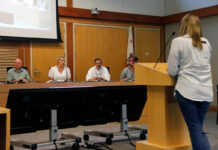It is hard to believe, but in 1954, a deadly virus in the United States scared families, changed behaviors, and led to some panicky behavior, somewhat like Ebola is doing now. It was called by some a “plague” and it was said that the greatest fear of Americans in the 1950s were the atomic bomb and this illness. It would kill 8,000 people in the first years of the 1950s, and it would generally target young, healthy kids. If it did not kill someone, it might cause significant paralysis, even to the point of that person not being able to walk, or lift an arm, or even to breathe. And that paralysis could be permanent.
Since it primarily struck young people, mothers and fathers were very worried about their children. In their fear, children were discouraged from playing with other kids, or going to movies or parties, and often kept home from school if a classmate had become ill. Particularly worrisome for parents were swimming pools.
People with this illness were taken from their families and hospitalized, sometimes for as long as a year. If they could not breathe, they could be placed in large metal tubes that assisted their breathing.
The mortality rate was not as bad as Ebola, but in some states almost one in one hundred came down with this disease.
Those of us over a certain age know this illness as poliomyelitis, or polio. Or by its scariest name: infantile paralysis, called that because it could paralyze infants.
What happened to polio is one of the great medical triumphs of the twentieth century. And it centers on one man, Jonas Salk, who would have been 100 years old on Oct. 28, and he was honored on that day by Google. The entire reason I am writing this is because I mentioned his name that day to some people in their twenties and thirties, and they did not even know who he was! I was amazed! Jonas Salk was truly a hero to those families in the 1950s who feared polio, somewhat akin to how we fear Ebola today. Compare his achievements to those of Albert Einstein, Bill Gates, Franklin Delano Roosevelt: who made more of a beneficial long lasting effect on the world?
He was a painstaking and thorough scientist, and began working on polio in 1947, and dedicated the next seven years of his life to finding a vaccine for polio. His background was in viral immunizations, and had worked on an influenza vaccine. But he became involved in the polio fight thanks to the National Foundation for Infantile Paralysis, later to be known as the “March of Dimes.”
Salk began his work using an untried method, that of a “killed” virus. His vaccine was first tried on laboratory animals, then in 1952, on humans. Salk wanted to assure the scientific world of the safety of his methods, so announced that his wife and three children had been among the first to volunteer to be inoculated with the vaccine.
Major trials ensued thereafter, and in 1954 a huge world wide program was set up to test the vaccine. This was a “double blind” test, meaning that some children were given the true vaccine (440,000 of them), and some were given a shot containing no vaccine (210,000). “Double blind” means the person giving the shot and the child receiving the shot did not know if it contained the vaccine or not. Obviously meticulous records were kept of what each child had received. And 1,200,000 children were observed as the “control group” to see what the rate of polio would be in the unvaccinated group. The world was watching carefully, just like we would watch any research now about Ebola.
The results were to be announced at the University of Michigan by one of Salk’s mentors, Dr. Thomas Francis, on April 12, 1955. There was massive interest and optimism, just like there would be now if there were 8,000 deaths from Ebola in four years, just like polio had caused in the 1950s. The place was jammed, as 500 people attended, including 150 from the press. 54,000 physicians watched via closed circuit TV in theaters across the United States. Millions listened on the radio, Europeans listened on the Voice of America. Some judges even suspended trials so everyone in the courtroom could listen.
Dr. Francis reported that the vaccine was 80-90 percent effective in prevention of polio. By the time he stopped talking, church bells were ringing, factories observed moments of silence, parents and teachers were weeping, churches and synagogues were holding prayer meetings. The world was ecstatic. Dr. Salk, after the lecture, said that the next version of the vaccine would be 100 percent effective. He was right.
And this is what happened: millions of doses of the vaccine were quickly made and distributed. Mass immunizations were held through out the United States and Europe, and the results were amazing. In 1953 there had been 35,000 cases of paralytic polio in the United States. There were only 5,600 in 1957, and 161 in 1961. By 1979 it was gone entirely from the United States. Much of the rest of the world is also polio free. The key is that polio only exists in humans, and there are no animal carriers. So once people are immunized, there is no more polio!
And here is another story about Jonas Salk that is probably under appreciated. Salk could have patented the vaccine, and made millions of dollars from this. He chose not to, as he wanted the vaccine to be available for as many people in the world as possible. What a remarkable man!
Now here are more personal stories: I asked the medical staff at the end of 1999 what they thought were the most important medical developments of the twentieth century had been. Virtually all of them said immunizations, especially the polio vaccine. Not antibiotics, not CT scanners. Immunizations!
I still see people around town who remain handicapped from their polio illness of childhood; the vaccine came too late for them.
I had a patient who was a practicing pediatrician in the 1950s. He told me 40 years later, with tears in his eyes, that the most difficult diagnosis he had to tell patients was that their child had polio, as there was no helpful treatment.
And Healdsburg’s own Milt Brandt had polio as a young man and spent 10 months in the hospital, over two months in an iron lung. He recovered enough to be ambulatory and contribute to our community, but was handicapped the rest of his life. One of the most amazing pictures I have ever seen is Milt Brandt, with crutches, shaking hands with my hero, Jonas Salk.
Dr. David Anderson is a retired Healdsburg physician.








